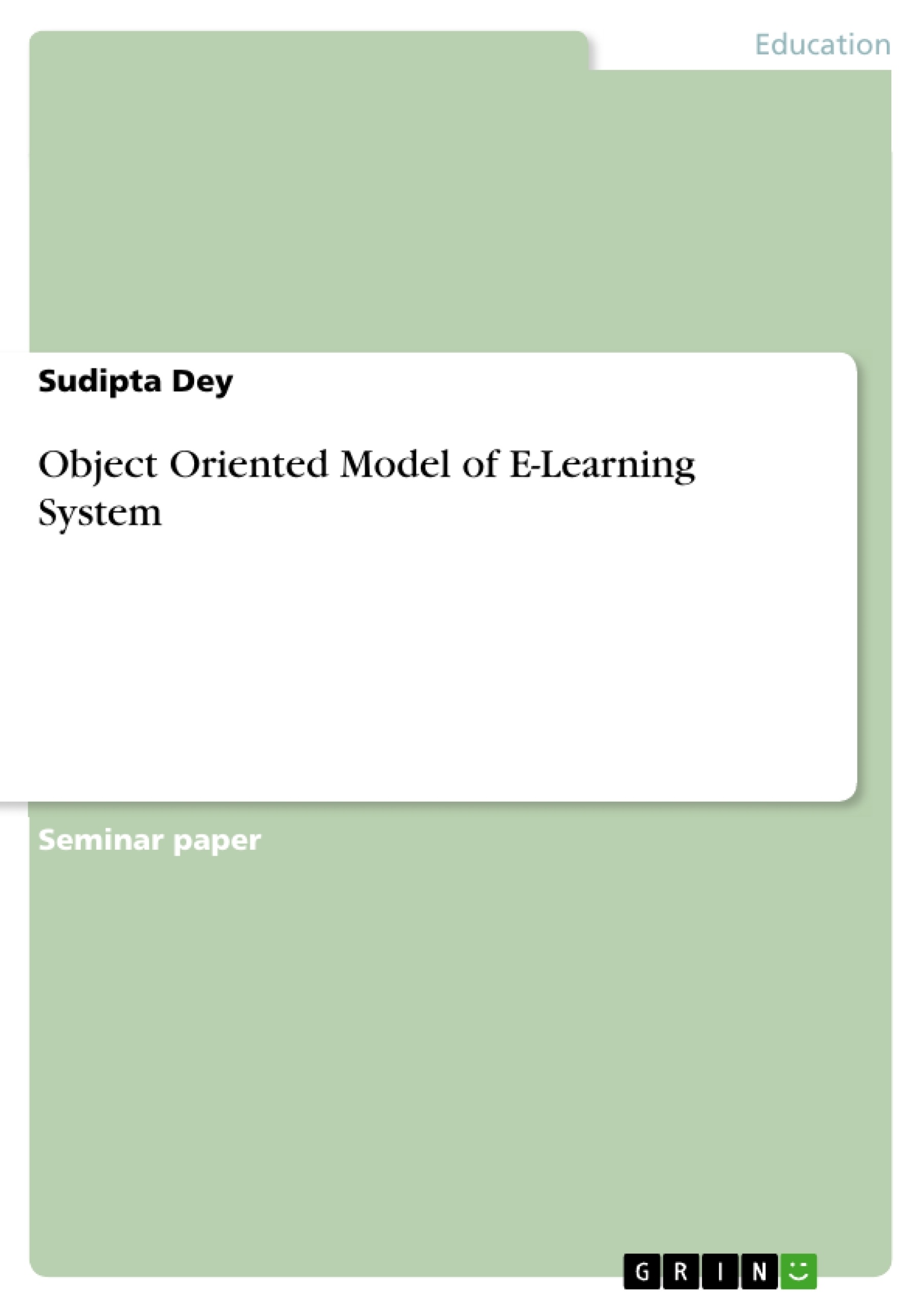E-learning is the term used to describe the use of the web and other Internet technologies in terms of enhancing the teaching and learning experience. It shares similar properties of other e-services. The development of E-Learning has subsequently led to a new way of learning. E-Learning is naturally suited to distance learning & flexible learning. As a consequence of E-Learning having to depend on the Internet or especially via web applications, the E-Learning environment has also become affected by security threats. With this inconsideration, this papers aims to explore how to develop a simple object oriented model of E-Learning system for E-Education & give some primary security to protect its contents.
The most of E-Learning system was developed the program according to the process oriented method by CGI, but after developing this method is difficult to reuse, maintain & repair. In this paper to develop an efficient design we use object-oriented modeling & UML [6] modeling. In this ever changing world of object oriented development, it has been getting harder & harder to develop & manage high quality applications in a reasonable amount of time.UML is a the information Technology industry’s version of a blueprint. It is a method for describing the systems architecture in detail
Table of Contents
- Introduction
- PART-I: DEVELOPMENT OF AN OBJECT ORIENTED MODEL OF E-LEARNING SYSTEM
- A.1.1. INTRODUCTION
- A.1.2. USE CASE DIAGRAM of E-LEARNING SYSTEM
- A.1.3. SEQUENCE DIAGRAM of E-LEARNING SYSTEM
- A.1.4. E-R DIAGRAM of E-LEARNING SYSTEM
- PART-II: SECURITY CONCERNS IN E-LEARNING
- PART-III: CONCLUSION & FUTURE WORK
Objectives and Key Themes
This paper proposes an object-oriented model for an e-learning system designed to enhance the teaching and learning experience while addressing security concerns. The primary objective is to create a robust and reusable system that can be easily maintained and updated.- Object-Oriented Modeling and Design
- Security Concerns in E-Learning
- Implementation of UML for System Architecture
- Use Case and Sequence Diagrams for System Interaction
- E-R Diagrams for Data Modeling
Chapter Summaries
- **Introduction:** This section provides an overview of e-learning, its benefits, and the need for a secure system. The paper highlights the limitations of previous process-oriented models and introduces the advantages of object-oriented modeling.
- **PART-I: DEVELOPMENT OF AN OBJECT ORIENTED MODEL OF E-LEARNING SYSTEM:** This part delves into the design and development of the proposed e-learning system. It focuses on the use case diagram, sequence diagram, and E-R diagram to depict the system's functionality, interaction among objects, and data modeling.
- **PART-II: SECURITY CONCERNS IN E-LEARNING:** This section explores the security threats associated with e-learning systems, classifying them as active and passive attacks. The importance of cryptographic algorithms in addressing security concerns is emphasized.
Keywords
The paper focuses on key concepts such as object-oriented modeling, e-learning, security, UML, use case diagrams, sequence diagrams, E-R diagrams, and cryptography. It explores the design and development of a secure e-learning system, addressing the challenges and solutions related to data security, user authentication, and system maintenance.- Quote paper
- Sudipta Dey (Author), 2012, Object Oriented Model of E-Learning System, Munich, GRIN Verlag, https://www.grin.com/document/196711



